Research Article Open Access
Obesity of Womens in Paleolithicum
| Laszló G. Jozsa* | |
| Professor emeritus of pathology, National Institute of Traumatology, Budapest, Hungary | |
| Corresponding Author : | László G. Józsa MD DSc. professor emeritus of pathology, H. 3648l CSERNELY. Táncsics str. 9. Hungary Tel: 36-48-440-019 E-mail: jozsalg@gmail.com |
| Received May 15, 2012; Accepted June 15, 2012; Published June 20, 2012 | |
| Citation: Jozsa LG (2012) Obesity of Womens in Paleolithicum. J Obes Wt Loss Ther 2:136. doi:10.4172/2165-7904.1000136 | |
| Copyright: ©2012 Jozsa LG. This is an open-access article distributed under the terms of the Creative Commons Attribution License, which permits unrestricted use, distribution, and reproduction in any medium, provided the original author and source are credited. | |
Visit for more related articles at Journal of Obesity & Weight Loss Therapy
Abstract
Photos and/or copies of a hundred Paleolithic statues were observed. The photos were taken on frontal, lateral and back view. Among the 97 female idols studied, 24 were skinny (mainly young ladies); 15 normal weighed, while more than half of them (51) represents overweighed or very obese females, their breasts was also extremely large. The figurine analysis shows various types of obesity. Fat tissue deposition can be seen on the following places: belly only on 2 figurines; belly + hip on 10 statues; belly + gluteal + hip on 14 idols, belly + hip + gluteal+ femora on 24 statuettes and diffuse obesity on one Venus. Steatopygia could be detected on 7 idols, while these females are not particularly overweight and had reasonably thin waist and legs.
| Introduction |
| "Only the bones of our ancestors are remaining until nowadays, the soft-tissues are all perished. How much more we could possibly know about our ancestors physiology, if only one frozen human mummy remain would be discovered from the Siberian ice-sheet, just like the dozens of mammoths and woolly mammoths" written by Lambrecht [1]. The truth is the color of skin, hair, the body habitat, the body mass and surface area, the types of obesity and the so-called steatopygia can not be recognized based on bones only. Examining Paleolithic sculptures helps us identifying the physiologic habitat; the body weight and the body proportionsof the Paleolithic women [2-5]. |
| Paleolithic art has limited range of technical resources. Drawing, painting and engraving were the techniques of parietal art, while engraving was the main technique used for portable arts. There is also evidence for Parietal bas-reliefs and sculptures. The most common are female illustrations. The statues are almost consistently nude, with no clothing (or body adornment), and can be identified by their facial features or their vertical body shape. There are plenty of so-called Venus idols spreading through most of Eurasia, from Spain to the Amur River [6,7] but male figurines are isolated and sporadic in they spatial distribution. |
| Material |
| Photos and/or copies of a hundred (3 male and 97 female) Paleolithic statues were observed. The photos were taken on frontal, lateral and back view. The female idols were excavated from Western Europe through the European Plain to the Baikal Lake and Amur River. There are 12 from France, 60 from Russia, 3 from Ukraine, 6 from the Czech Republic, 7 from Italy, 4 from Austria, 3 from Germany and 1–1 pieces from Switzerland and Turkey. Most of the idols have been engraved on mammoth ivory or mammoth bone (metacarpals), moreover limestone, serpentine, amphiboly, hematite, or in rare cases burnt clay. The majority of Venuses were nude, only the Siberian ones showed clothing's and hood. The chronological age and stature of sculptures have been known from former studies. I have determined the body proportions, the anthropological and physiological characteristics, the relation of shoulder to hip ratio, the size of breasts on the Venus figurines. I have calculated the body weight based on the estimated thickness of abdominal fatty tissue as described by Kósa and Zöllei [8], and determined the centre of gravity of these idols measuring the deviation angles (Figure 1) from the top of their head going down to the waist or hip. |
| Observations |
| Among the 97 female idols studied, 24 were skinny (mainly young ladies) and 15 normal weighed (Figure 1 and Figure 2). All of these statues have small breasts, with the exception of two. More than half of the statuettes (51) are representing overweight or very obese females; their breasts mostly were also extremely large (Figure 3 - Figure 6). Steatopygia could be detected on 7 idols, while these females are not particularly overweight and had reasonably thin waist and legs. The Avdeevo Venuses are demonstrating the transition from normal weighted to the overweight and excess obese female (Figure 3) Figurines analysis proved various types of obesity. Fat tissue deposition can be seen on the following places: belly only on 2 figurines; belly + hip on 10 statues; belly + gluteal + hip on 14 idols, belly + hip + gluteal + femora on 24 statuettes and diffuse obesity on one Venus (Figure 3- Figure5). More than two third of obese statues has extremely giant, hypertrophic breasts, hanging down to the crista iliaca or to the suprapubic region (Figure 3 – Figure 5). Measuring the deviation angle from top to the hips shown the following results: on non obese idols it is only 25 to 28 degrees, while on obese figurines 46 to 55 degrees (Figure 7). For example: on Grimaldi, Dolni Vestonice and Gagarino Venuses 50 grades, on Willendorf Venus 55 grades. The shoulder to hip ratio on non obese figurines was 1 : 0,9 to 1,0, while on the obese idols varied between 1 : 1,32 to 1 : 1,67, this means that the hips was 30 to 67 per cent broader than the normal value (Table 1). The estimated body weight of the obese figurines varied between 85 and 105 kgs, if the models were 155 cm of height. However, the body weight of skinny and normal weighted figurines were ranging from 43 to 54 kgs. |
| Discussion |
| The body height of Neanderthal and also H. sapiens archaic females ranged between 152 to 156 cm and the body mass varied from 50 to 55 kg [9]. The association of fat to fertility has been widely discussed in anthropological literature [10,11]. Through the Paleolithic Era there were frequent starvations, in fact the obesity was rare [12,13]. As opposed to the sculptures where the skinny subjects are rare but the obesity is often seen [14,15]. How can we solve this contradiction? I hypothetically would say, the obesity meant the ideal beauty, the prettiness, the desirable and we can't exclude that in some societies overweight females are common. I believe, these are the explanations for why most of these idols are portrayed as obese females. Some authors has been suggested that the proportions of these figurines depict the obesity associated with endocrine abnormalities or dietary error [16,17]. |
References
- Lambrecht K, (1926) Az osember. (The early man) Dante, Budapest.
- Hermanussen M (2003) Stature of early Europeans. Hormones (Athens) 2: 175-178.
- Hudson MJ, Aoyama M (2007) Waist to-hip ratios of Jomon figurines. Antiquity 81: 961-971.
- Hudson MJ, Aoyama M, Kawashima T, Gunji T (2008) Possible steatopygia in prehistoric central Japan: evidence from clay figurines. Anthropological Science116: 87-92.
- Hufschmidt HJ (1977) Body proportion in sculpture and painting. An anthropological and historical essay. (in German) Archiv for Psychiatrie und Nervenkrankenheiten224: 187-202
- Bereczki (2000) Beitrage zur Typologisierung der Venusstatuetten der Gravettien Kultur. Praehistoria 1: 173-183.
- Poikalainen V, (2001) Paleolithic art from the Danube to Lake Baikal. Folklore (Tartu) 18/19 : 7-60.
- Kosa F, Zollei M, (1975) A hasfali zsirparna vastagsaganak osszefuggese a testhosszal es a testsullyal. (Article in Hungarian) (Connection between the thickness of lipid layer of the belly, and the body weight and body stature). Rendororvosi Tudomonyos alesek kozlemenyei 6: 209-213.
- Helmuth H, (1998) Body height, body mass and surface area of the Neanderthals. Z Morphol Anthropol 82: 1-12.
- Goldman B (1960-63) Typology of the mother-goddess figurines. Jahrbuch for Prahistorische und Ethnographische Kunst 20: 8-15.
- Rice PC (1981) Prehistoric Venuses: Symbols of motherhood or womanhood? Journal of Anthropological Research 37: 402-414.
- Cheng TO (2006) Obesity, Hippocrates and Venus of Willendorf. Int J Cardiol 113: 257.
- Colman MD E (1998) Obesity in the Paleolithic era? The Venus of Willendorf. Endocr Pract 4: 58-59.
- Pontius AA (1986) Stone-age art "Venuses" as heuristic clues for types of obesity: contribution to "iconodiagnosis". Percept Mot Skills 63: 544-546.
- Jozsa LG (2010) What was the stature of the paleolithic women? Folia Anthropol 9: 19-37.
- Sauser G (1965) Von der Gestalt der Venus von Willendorf. Anthropol Anz 29: 205-208.
- Trinkaus E, (2005) The adiposity paradox in the middle. Danubian Gravettian Anthropologie 43: 263-271.
Tables and Figures at a glance
| Table 1 |
Figures at a glance
 |
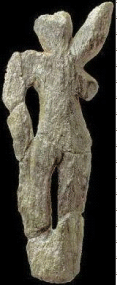 |
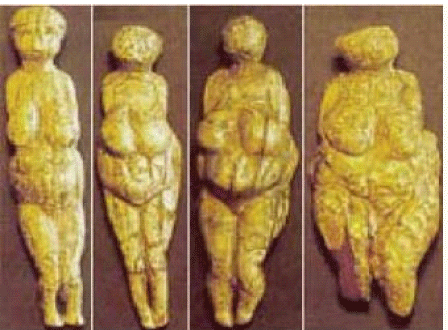 |
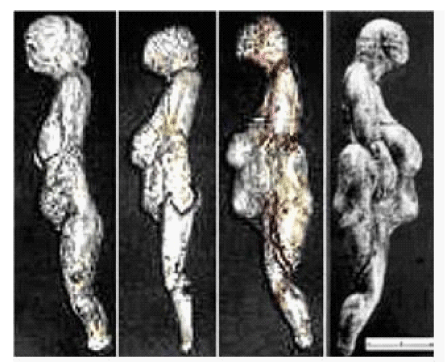 |
| Figure 1 | Figure 2 | Figure 3a | Figure 3b |
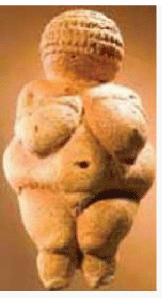 |
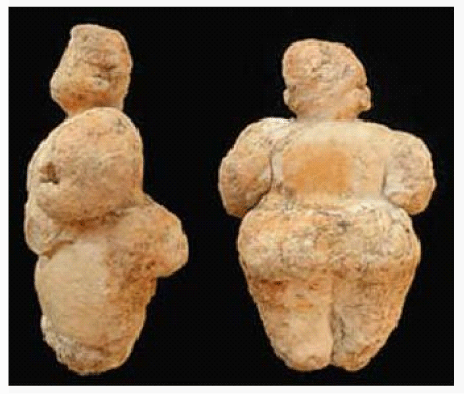 |
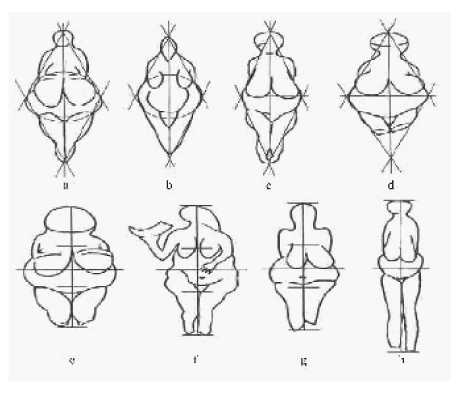 |
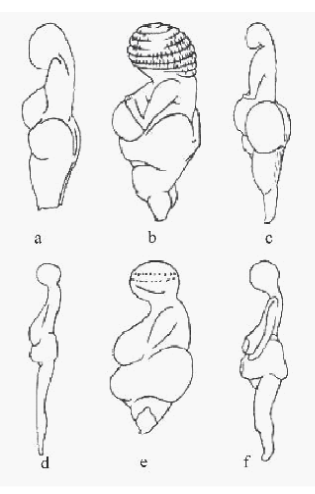 |
| Figure 4 | Figure 5 | Figure 6 | Figure 7 |
Relevant Topics
- Android Obesity
- Anti Obesity Medication
- Bariatric Surgery
- Best Ways to Lose Weight
- Body Mass Index (BMI)
- Child Obesity Statistics
- Comorbidities of Obesity
- Diabetes and Obesity
- Diabetic Diet
- Diet
- Etiology of Obesity
- Exogenous Obesity
- Fat Burning Foods
- Gastric By-pass Surgery
- Genetics of Obesity
- Global Obesity Statistics
- Gynoid Obesity
- Junk Food and Childhood Obesity
- Obesity
- Obesity and Cancer
- Obesity and Nutrition
- Obesity and Sleep Apnea
- Obesity Complications
- Obesity in Pregnancy
- Obesity in United States
- Visceral Obesity
- Weight Loss
- Weight Loss Clinics
- Weight Loss Supplements
- Weight Management Programs
Recommended Journals
Article Tools
Article Usage
- Total views: 7040
- [From(publication date):
June-2012 - Jun 30, 2025] - Breakdown by view type
- HTML page views : 2471
- PDF downloads : 4569
